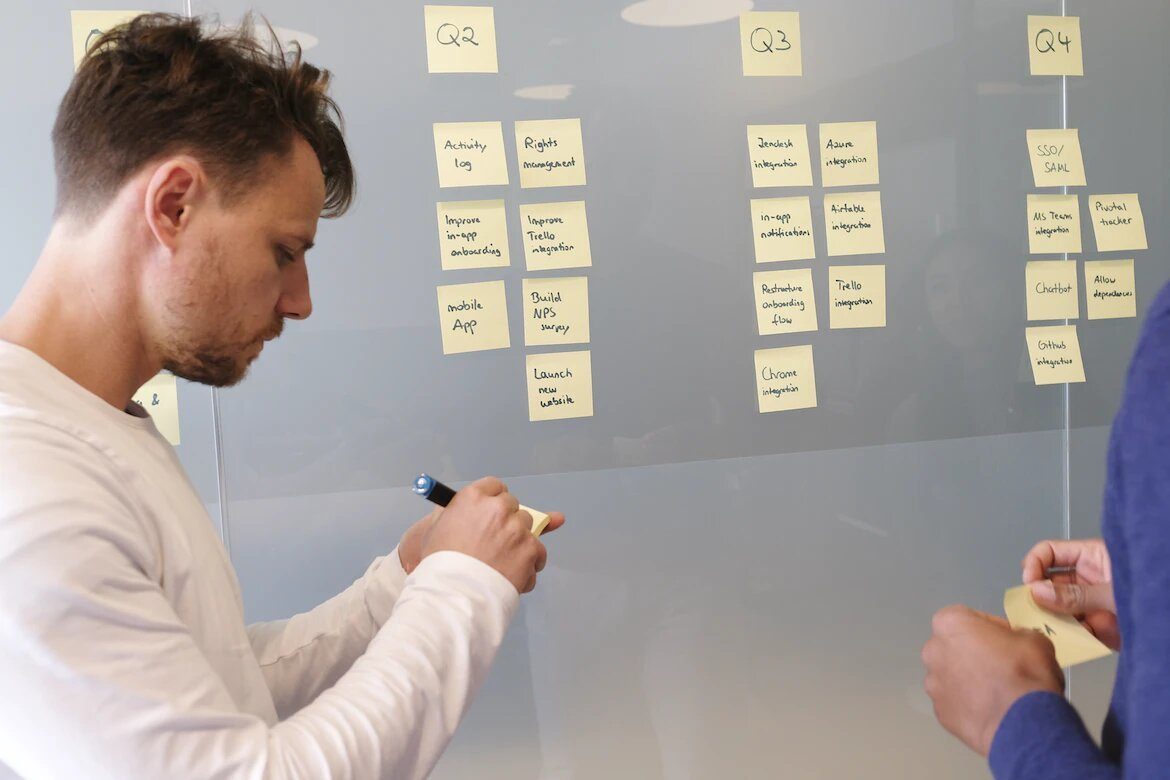When Motivation Fades
Motivation is a prerequisite to learning. It’s crucial at the beginning of learners’ journeys and remains important throughout the pursuit of mastery of any skill.
Motivation is a renewable but impermanent resource.
What happens when it starts to fade?
Learners who encounter progress plateaus or spend long stretches of time pursuing new learning initiatives often experience a noticeable dip in motivation to continue. Others find themselves in a similar place after getting lost in the details or losing sight of the larger picture of a project.
“Motivation vacations” are both normal and curable.
But without the support of a learning organization that has systems in place to motivate, employees risk having waning motivation take a negative toll on their performance at work and their ability to learn new things.
What can we do when team members start to lose motivation?
We can come prepared with course correction strategies for motivation.
In this blog post, we will discuss 10 tips for employers to help their teams regain and maintain motivation to learn so they can achieve business goals and feel fulfilled by the quality of the work they do.
10 Tips To Keep Learners Motivated
1. Emphasize The Process, Not The Outcome
Learners love to sense progress, even if they can’t see results immediately. With eyes set only on the finish line, the quantity of work before them becomes daunting.
Help employees focus on the process by breaking down tasks into smaller, more manageable steps. If an employee is working on a project that will take several weeks, work with them to break it down into bite-sized tasks to be completed in one sitting or in a single day.
Viewing learning from this vantage point helps them notice incremental progress and sustain motivation.
Final outcomes of learning pursuits can be literally years away—by reframing learners’ focus on the iterative process of learning, they can salvage motivation that would otherwise fade.
2. Build Autonomy Into Roles
Let employees play a part in choosing their own projects and learning objectives. Employees who decide what and how they learn are more likely to stay engaged and motivated.
- If you have several simultaneous projects, give members of your team the opportunity to choose which project they want to work on.
- Let employees decide the format to use to present their report.
- Suggest a handful of learning initiatives instead of assigning a single one, so learners can find one that interests and benefits them.
You can still provide guidance and set expectations for employees while imbuing their roles with autonomy. Give them the freedom to work in a way that makes the most sense for them.
3. Set Clear Goals
Goals should be specific, measurable, achievable, relevant, and time-bound (SMART). For example, instead of saying “increase sales,” try “increase sales by 20% in the next quarter.”

airfocus/Unsplash
Establish common ground with employees about their responsibilities and how to measure progress. This provides a framework for continued motivation; employees will always have a tangible way to gauge success.
Ensure that there’s a clear connection between learning and how it benefits them in their roles. When team members understand how to apply new skills to their work, they more easily perceive the value of learning and maintain the motivation to put in the required effort.
Set goals that are achievable but challenging. If goals are either unattainably large or negligibly small, they’ll risk discouragement and loss of motivation.
4. Give Feedback And Give It Often
Feedback helps employees understand what they’re doing well and where they can improve. Give feedback regularly and make sure it’s specific, objective, and actionable.
Establish the mutual understanding that constructive criticism helps propel learners towards their goals, even when motivation is dwindling.
5. Schedule Motivation
Motivation is fleeting. Instead of anticipating when it will strike, deliberately set times for employees to tap into a “motivated self.”
- Choose three moments in the day to reflect, brainstorm, and plan
- Host weekly or monthly goal-setting meetings
- Schedule regular check-ins with employees
Scheduling motivation—even scheduling time to think about motivation—ensures that it’s given the attention it needs and that employees always have a chance to voice thoughts and concerns.
6. Celebrate Successes
Wins, big or small, are cause for acknowledgment and celebration.
Recognizing employees’ wins helps them feel appreciated and motivated to continue with what has been successful.
Celebrations don’t have to be grandiose or time-consuming. Small gestures, like sending a personalized email or a shout-out in front of the team, go a long way. Choose something that will meaningfully recognize their achievement and show them that their work is valued.
7. Help Employees Recall Original Sources Of Motivation
What was it that made them want to learn in the first place?

Jukan Tateisi/Unsplash
For some, it might be a personal challenge. For others, it might be tied to a business goal. Regardless of the source, reminding team members of their initial motivation helps reignite the spark that first set everything in motion.
8. Encourage A Curious Mindset
A curious mindset is one that’s open to new ideas and willing to experiment.
Design spaces for employees to ask questions. Consider creating an “ask me anything” series for employees to submit questions anonymously and have them answered. You can also assemble informal groups to engage in free-form discussion and explore their own curiosities.
Provide employees with opportunities to experiment. For example, set a budget and allow your team to try out different marketing tactics, or let them implement a new strategy entirely.
Encouraging a curious mindset will inspire employees to remain in constant pursuit of growth.
9. Lead By Example
Employees who observe a motivated leader are more likely to be motivated themselves. Leading by example will not only help employees stay motivated, but it will also help them feel more connected to you and the organization.
Lead by example by asking questions yourself, embracing experimentation, sharing your own challenges and successes, and showing vulnerability.
10. Build Your Team Culture Around Continuous Learning
A culture of continuous learning is one in which employees feel like they belong, are valued, and can be themselves. It’s a culture that encourages collaboration, open communication, and fun!
Building a positive team culture of this sort takes time and effort, but it’s worth it. It all starts with hiring the right people and setting the tone through your words and actions.
By building your team culture around continuous learning, you’ll create an environment that is supportive of employees’ growth and development. This will help them feel motivated because they’ll always have opportunities to learn and improve.
Concluding Thoughts
Motivated employees are the lifeblood of successful organizations.
By following these 10 strategies, employers can create a motivation machine that will help learners stay focused, enthusiastic, and curious about their work—no matter what challenges or obstacles arise.
And when your team is motivated, they’ll be able to put their best foot forward and achieve continuous success.
Thanks for reading! Motivated yet? Share this article with your team and get the discussion started. Until next time!

Curious Lion Inc.
Curious Lion is not your typical learning company. We’re like a ghostwriter. You stay in the spotlight while we support you behind the scenes with brainstorming, strategy, learning design, and production.
Originally published at curiouslionlearning.com.
